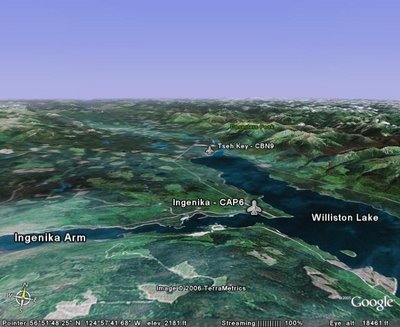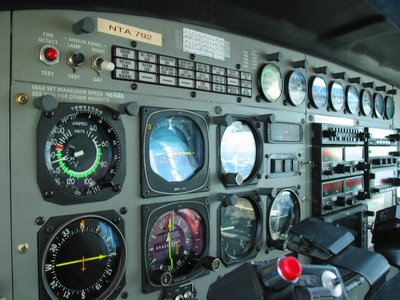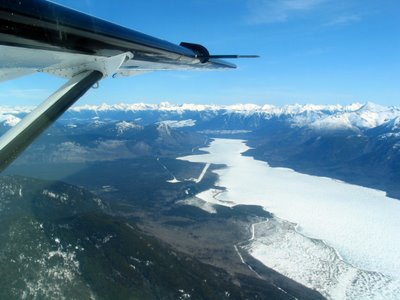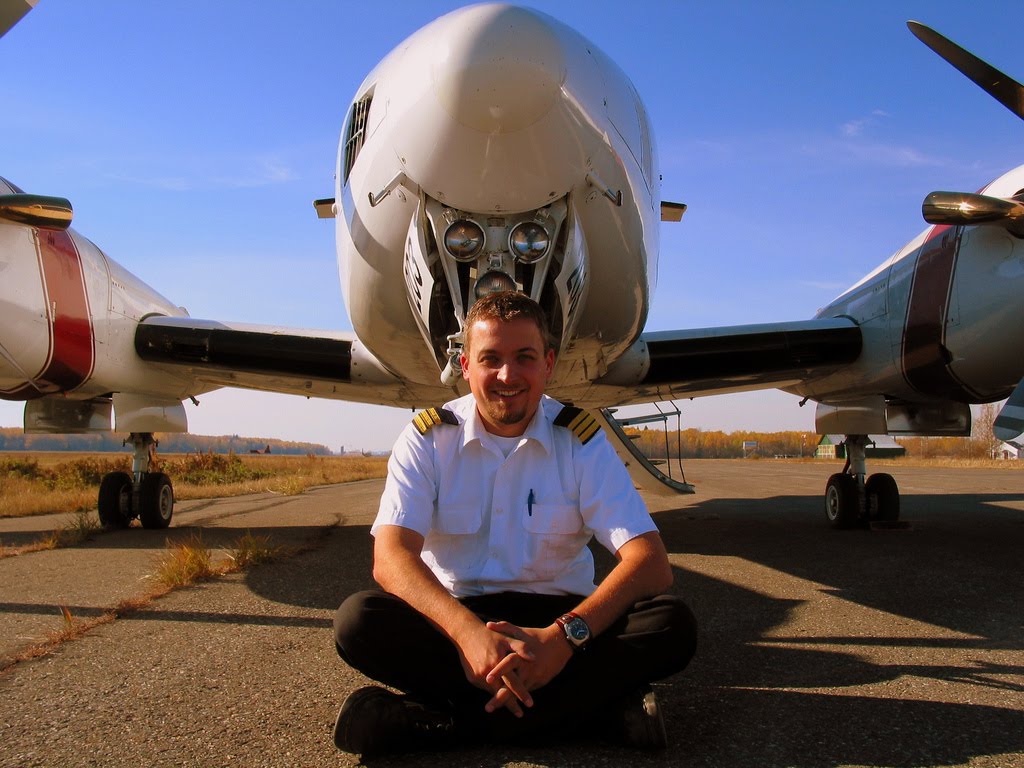Flying Through Spring
The snow covered city of Prince George that I arrived in one month ago has been blessed with much spring sunshine in the past couple of weeks. So much so that the snow has receded to reveal the grass in most of the city. Twice already we've fired up the bbq to sizzle up some steaks. I'm now really looking forward to summer.
Spring flying can be quite interesting. One day will be sunny, sky clear, and double digit temperatures. The next day it will snow. Temperatures slightly above freezing on the ground mean that the temperature in cloud will likely by slightly below freezing. With the unstable air that spring also tends to bring, this means, even though winter is over, icing is still a concern. However, so far the spring weather has treated us very well in the Northern Interior of BC. High pressure systems have brought mostly sunny skies and enjoyable flying. It hasn't been without certain hazards though. The high pressure tends to lock in the 'condensation nuclei' produced by the mills in the area. This, combined with the ice coming off of water, introducing moisture to the air, and still cool temperatures at night, have been producing some foggy mornings. Airports are notorious for being placed in the local areas where fog seems to lie the most and Prince George is no exception. It's not too much to deal with. The Caravan requires 1/2 mile visibility in order to take off IFR. The 1900 requires 1/4 of a mile. If we don't have the required visibility, reported by the tower, we just wait around for the fog to let up. Once it does, we blast off through it, ending up on top and in clear sunny skies usually before we get a chance to call for the after take off checks. Normally, as the day progresses, the fog will lift into a thin stratus layer and then just dissipate. On a flight up the lake this week the fog and low stratus had set in north of Mackenzie, covering the entire valley. Reports from the locals were promising so I, well above the fog enjoying the sunshine, headed northbound expecting it to be broken up by the time I got there. I even passed a few holes enroute, preferring to chance the fact it'll be good when I get there, rather then scud run up the lake. As I got closer and closer to the North end of the lake, I started to second guess myself as no holes were presenting themselves. In fact, the cloud deck over the lake was looking thicker here then anywhere else up the lake...Great.... I radioed down to the ground in Tsay Keh asking what they saw. They reported better conditions on the west side of the valley. Looking west I noticed the Ingenika Arm wide open, descended by the Ingenika airstrip, and got my way under the stratus layer. Once underneath, the ceiling was low, but the visibility very good, I flew the 10 miles from Ingenika to Tsay Keh over the lake under the ceiling and completed the trip without any other worries. The low ceiling ended a few miles north of Tsay Key (go figure) and Fort Ware was wide open. In the hour it took me to get to Fort Ware and back overhead Tsay Keh, the stratus layer was almost gone and the entire lake was now wide open.

The other hazard spring presents is very soft gravel runways. As the snow melts the runways can become quite sloppy and muddy. This could lead to control problems on the ground, but more often leads to damaged aircraft, especially propellers. Ways we try to keep ourselves out of trouble include leaving earlier in the morning when the runway is likely still frozen, perhaps unloading and loading on the runway if the ramp is too soft, restricting loads, or, if the conditions are just too bad, canceling flights. If we're lucky, which so far we have been this spring, the thaw will only last a couple of weeks, the rain will hold off, and the runways will dry out, ready for the steady summer flying.








